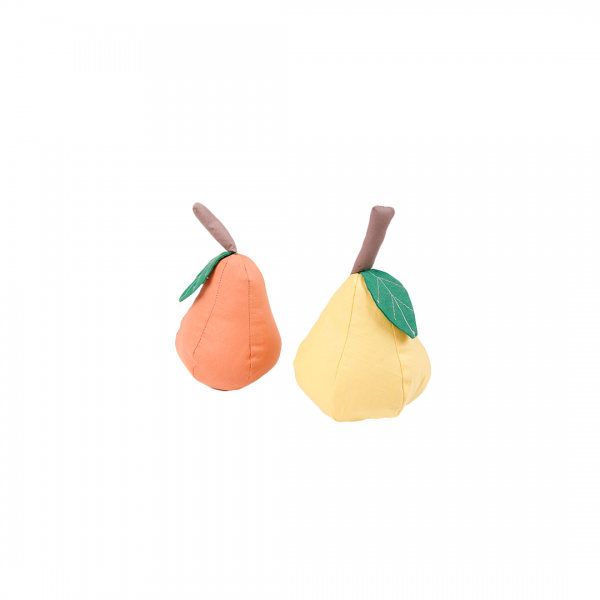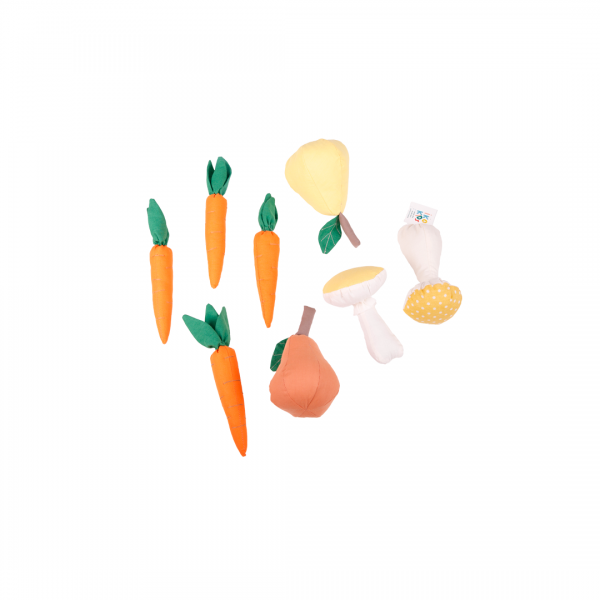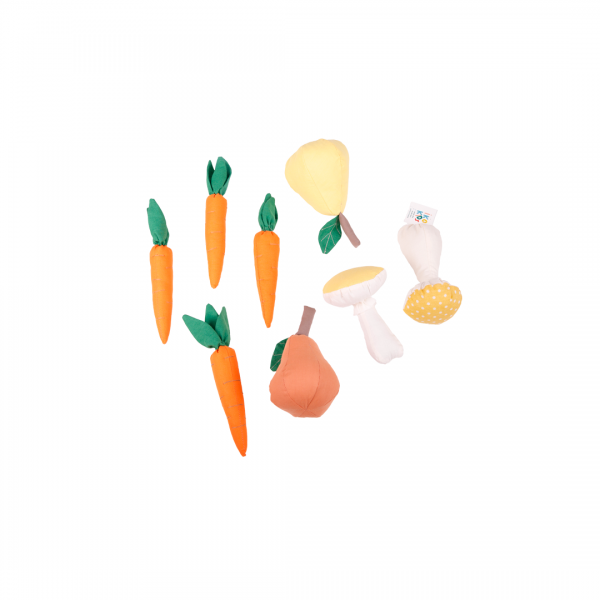Toys
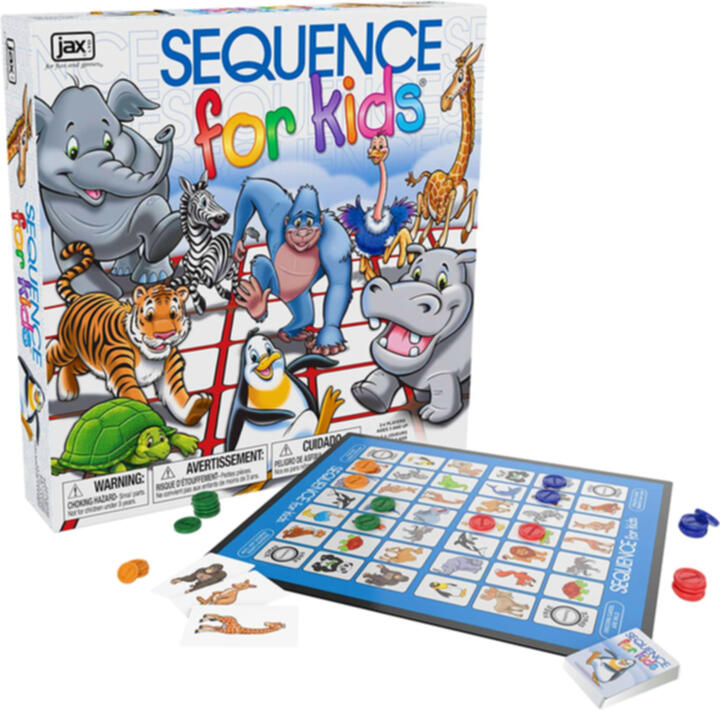
Board game Saboteur for kids
It’s the classic game of SEQUENCE made just for kids! Play an animal card from your hand, and place your chip on the corresponding animal on the board. Wild cards add excitement to the game – use a unicorn card to place your chip anywhere, or use a dragon card to remove an opponent’s chip. The first player with four chips in a row wins! This exciting strategy game helps develop logical thinking skills. Reading is not required to play. Targets kids ages 3-6 and is for 2-4 players. Sequence for Kids is a children’s version of the popular board/card game Sequence. It has a smaller board, cards that shows various animals instead of a regular deck, and you only need 4 in a row to win.
70
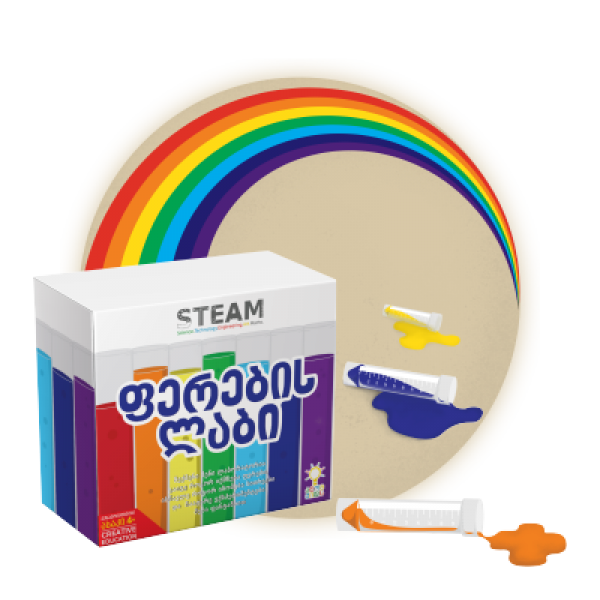
Lab of colors
With the help of the color lab, you can learn more about colors, create primary and composite colors yourself, conduct rainbow and liquid acidity experiments. With the help of color lab you will develop: Allows for accurate dosing with the help of the metric system. You will see how we can get colors composed of primary colors. You will learn how to determine the acidity of a liquid. Age: 8 to 13 years
40
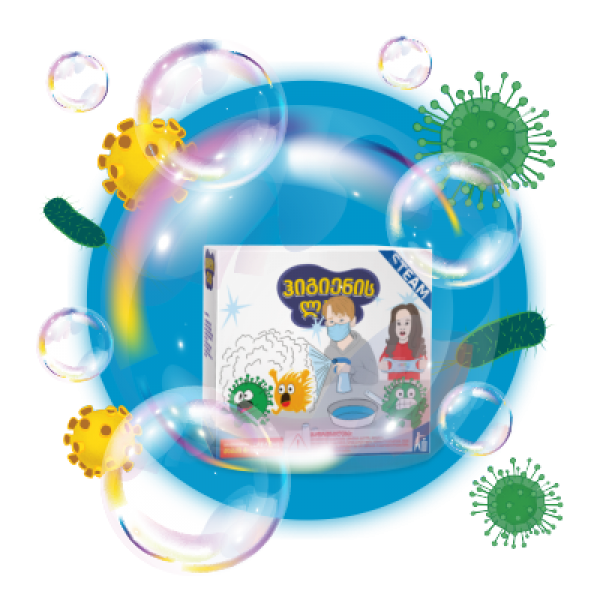
Hygiene lab
The "Hygiene Lab" experiment set teaches children everything about bacteria, viruses and microbes, and also shows how important it is to follow hygiene rules. With the help of hygiene lab, you will develop: scientific skills. You will get information about bacteria and viruses. You will get information about why we need hygiene and how it works. Related Products Age: 3 to 8 years
31
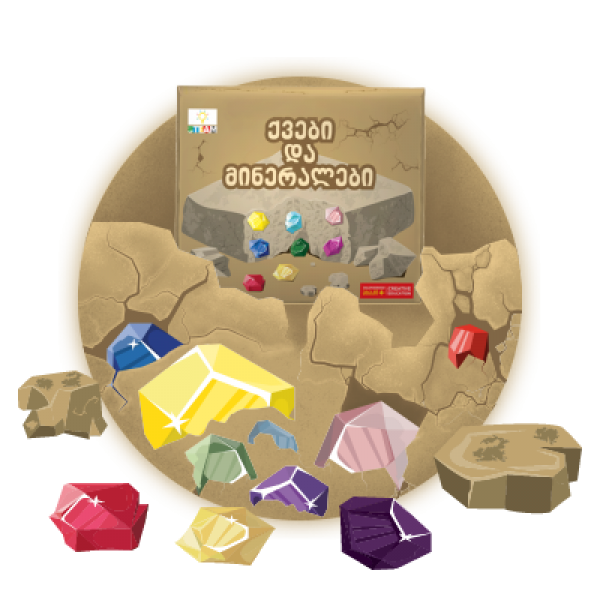
Stones and minerals
Find 12 different minerals buried in rocks, learn about their 3D chemical structure, discover which minerals are found where, and color them on a world map. With the help of stones and minerals you will develop: motor skills observational skills Discover natural minerals, their chemical structure and mining countries. Age: 3 to 8 years
30
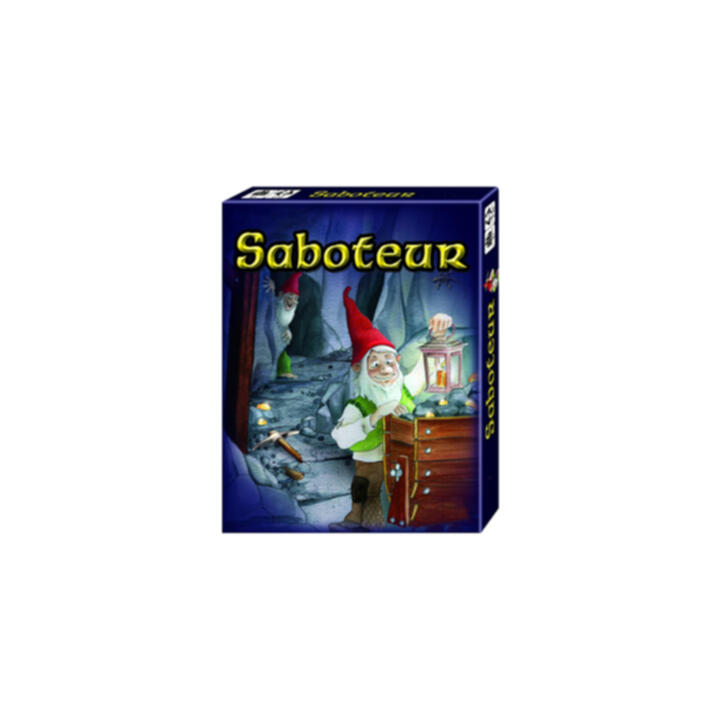
Board game Saboteur
Players take on the role of dwarves. As miners, they are in a mine, hunting for gold. Suddenly, a pick axe swings down and shatters the mine lamp. The saboteur has struck. But which of the players are saboteurs? Will you find the gold, or will the fiendish actions of the saboteurs lead them to it first? After three rounds, the player with the most gold is the winner. With the help of Dwarf Cards, the players are assigned their role: either miner or saboteur. The roles are kept secret- they are only revealed at the end of the round. The Start Card and the three Goal Cards are placed onto the table, each seven cards away from the start and one card between each Goal Card. The Goal Cards are placed face-down. The gold is on one of the Goal Cards, but nobody knows which. Players have cards in hand. On a player’s turn, he must do one of three things: place a Path Card into the mine, play an Action Card in front of a player, or pass. The Path Cards form paths leading to the Goal Cards. Path Cards must be played next to a already-played Path Card. All paths on the Path Card must match those on the already-played cards, and Path Cards may not be played sideways. The miners are trying to build an uninterrupted path from the Start Card to a Goal Card, while the saboteurs are trying to prevent this. They shouldn’t try and be too obvious about it, however, lest they be immediately discovered. Action Cards can be placed in front of any player, including oneself. Action Cards let the players help or hinder one another, as well as obtain information about the Goal Cards. Once a player places a Path Card that reaches the gold, the round is over. The miners have won and receive cards with gold pieces as their reward. The round is also over if the gold could not be reached. In that case, the saboteurs have won and receive the gold pieces. Once the Gold Cards have been distributed, the next round begins. The game is over at the end of the third round, with the player with the most gold pieces being the winner. For 3 to 10 players. Age: 8+
40
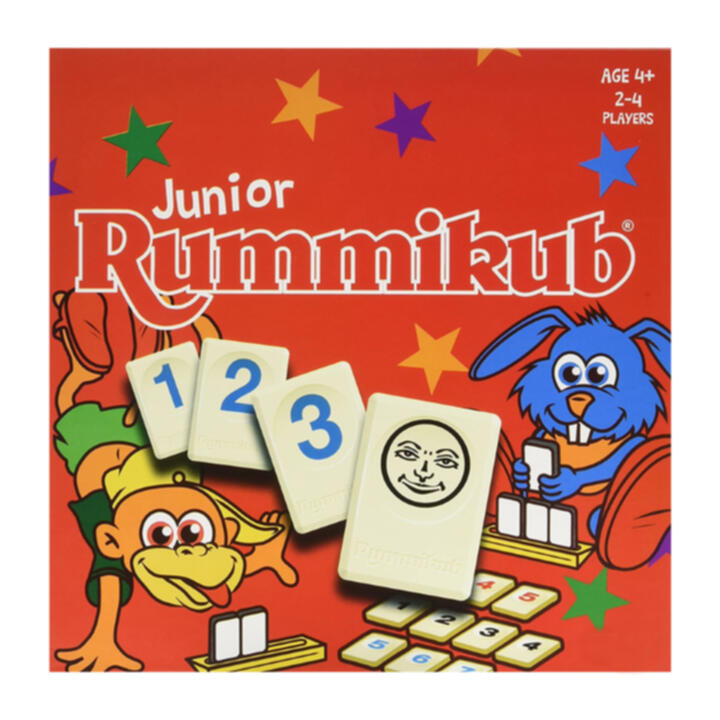
Board game Rummikub Junior
his is the kids version of the classic game Rummikub. Rummikub Junior is the fast-moving numbers game which develops numeracy skills, aids logical thinking, but above all is loads of fun to play. If you can count to 10, you are ready to play Junior Rummikub and join the Rummikub family which is millions strong. Collect as many stars as possible to win the game. Earn Stars when you make Runs by laying down 3 or more consecutive number tiles of the same colour, or add to runs which are already laid down on the table. How many Stars can you get? Junior Rummikub is ideal for younger children, but is also a great game for whole family. For 2 to 6 players. Age: 8+
50
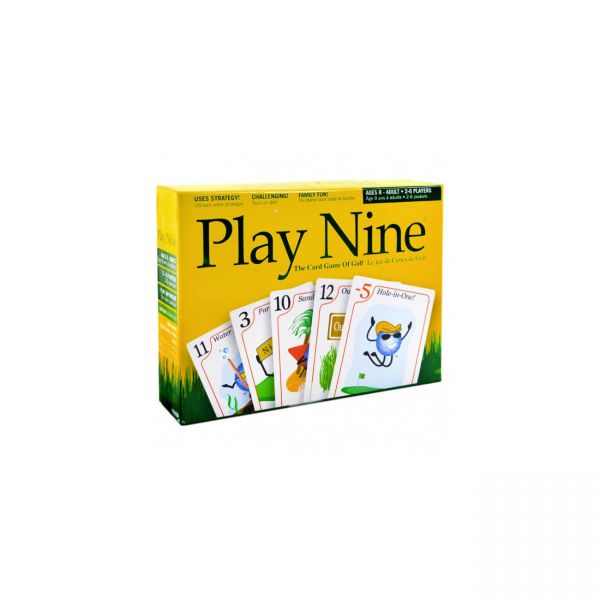
Board game Play Nine
Play Nine is the new card game of golf designed for 2 - 6 players, ages 8 to adult. The object is to shoot the lowest score. After nine holes, the lowest score wins. Card values range from -5 (hole-in-one) to 12 (out of bounds). Golfers and non-golfers alike enjoy Play Nine. The combination of strategy and luck-of-the-draw keeps the fun and challenge alive down to the last hole. Play Nine, the card game of golf, is easy to learn and fun to play so - Let's Play Nine! For 2 to 6 players. Age: 8+
40
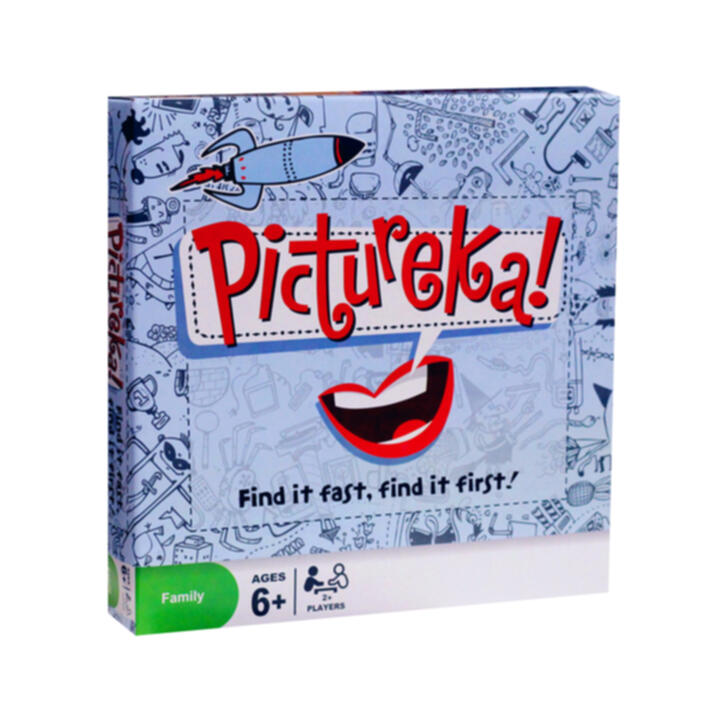
Board game Pictureka!
Pictureka! is a new kind of game, both in mechanic as in artwork. The mechanic is invigorating with its large square gaming tiles. The game board is composed of 3 by 3 game tiles, so the game board on which is played is a huge square of 63 cm x 63 cm. This is large enough for several players to be able to play the game at the same time. The game board is “alive”, it is not a static board as the tiles are flipped over, turned and moved. So it is not possible to memory map the board. The mechanic of an ever changing board makes it not only fun; also the challenge is kept into the game all the time. A game turn Players will have to throw a color dice at the beginning of their turn. According to the color thrown (3 possibilities) they must draw a mission card of the same color. There are 3 kinds of missions. How to win the game? Be the first one to have successfully accomplished 10 missions. Each successful mission gives 1 point, so be the first one to get 10 points. The artwork is something not to be found in ‘standard’ games. The personal drawing style of the artist Eugene makes this a kind of playing artwork. For 2 to 7 players. Age: 6+
100
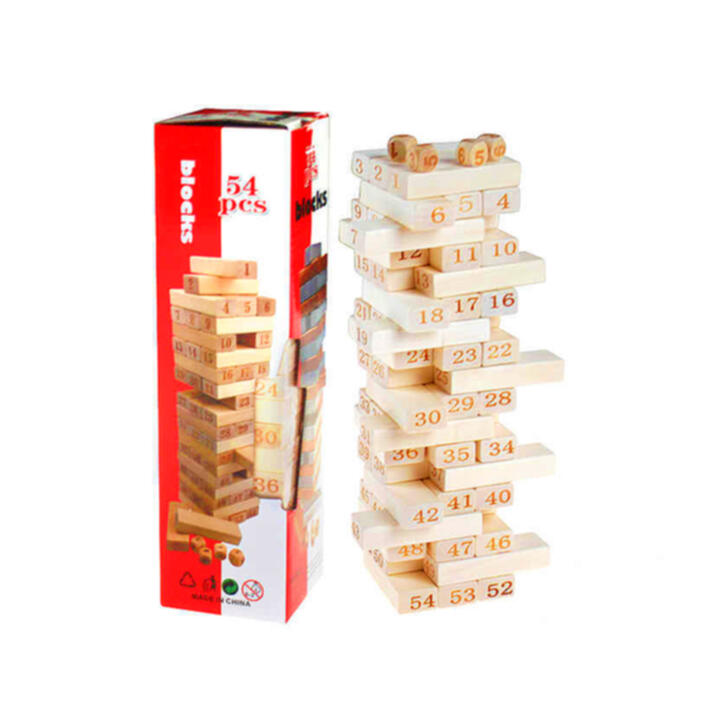
Board game Jenga
A tower building game. Jenga is played with 54 wooden blocks; each block is 3 times as long as it is wide, and slightly smaller in height than in width. The blocks are stacked in a tower formation; each story is three blocks placed adjacent to each other along their long side, and each story is placed perpendicular to the previous (so, for example, if the blocks in the first story are pointing north-south, the second story blocks will point east-west). There are therefore 18 stories to the Jenga tower. Since stacking the blocks neatly can be tedious, a plastic loading tray is included. Once the tower is built, the person who built the tower moves first. Moving in Jenga consists of taking one and only one block from any story except the completed top story of the tower at the time of the turn, and placing it on the topmost story in order to complete it. Only one hand at a time may be used to remove a block; both hands can be used, but only one hand may be on the tower at a time. Blocks may be bumped to find a loose block that will not disturb the rest of the tower. Any block that is moved out of place may be left out of place if it is determined that it will knock the tower over if it is removed. The turn ends when the next person to move touches the tower, although he or she can wait 10 seconds before moving for the previous turn to end if they believe the tower will fall in that time. The game ends when the tower falls in any significant way -- in other words, any piece falls from the tower, other than the piece being knocked out to move to the top. The loser is the person who made the tower fall (i.e. whose turn it was when the tower fell); the winner is the person who moved before the loser. For 1 to 8 players. Age: 6+
40

Board game Hedbanz
The quick question game of “What am I? Am I a chicken? How about a bicycle? In this goofy game you never know what you are until you start asking questions! Figure out if the cartoon on your head is an animal, food or a household item. Everybody knows but you! For 2 to 6 players. Age: 7+
35
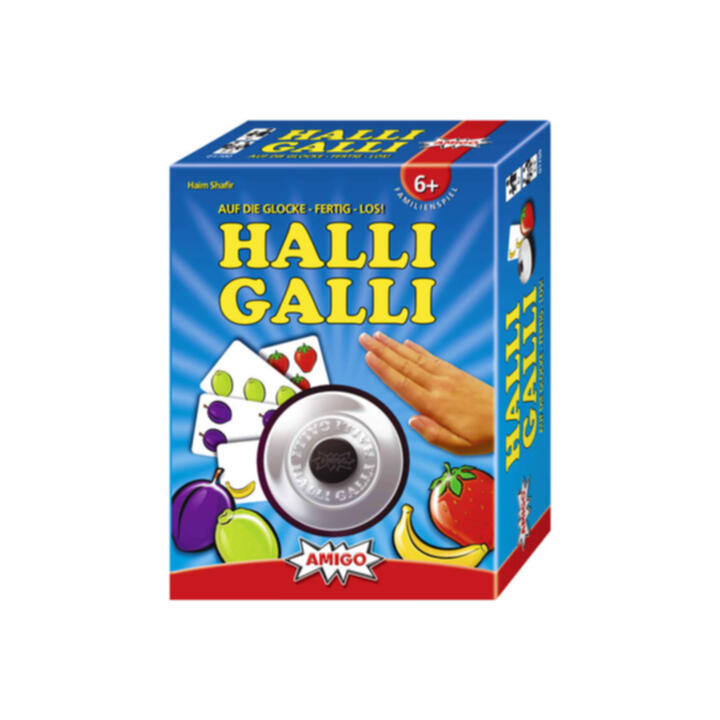
Board game Halli Galli
Each player turns over a card in the order of play. As soon as the revealed cards show exactly 5 fruits of the same sort, the first player to ring the bell wins all of the revealed cards. The aim of the game is to win the largest number of cards. For 2 to 6 players. Age: 6+
50
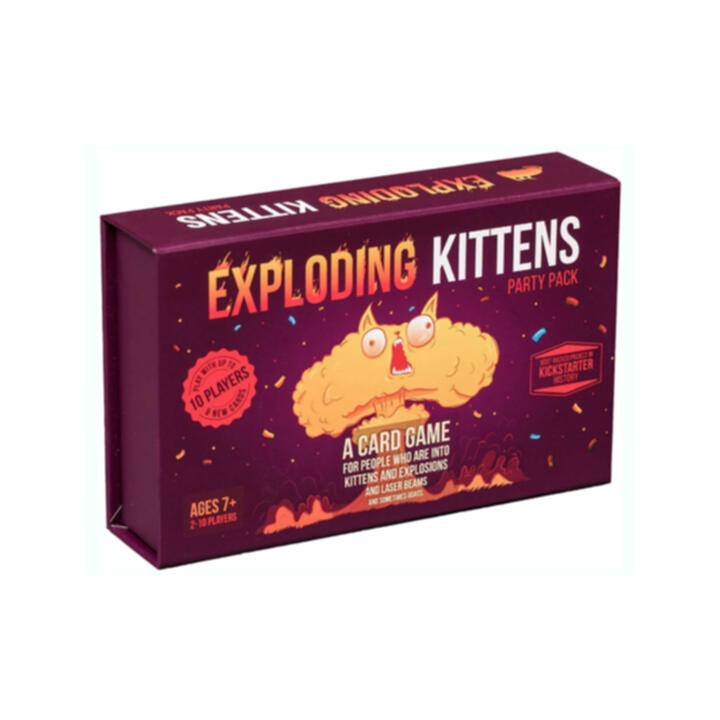
Board game Exploding Kittens Party
Players take turns drawing cards until someone draws an exploding kitten and loses the game. The deck is made up of cards that let you avoid exploding by peeking at cards before you draw, forcing your opponent to draw multiple cards, or shuffling the deck. For 2 to 10 players. Age: 7+
50
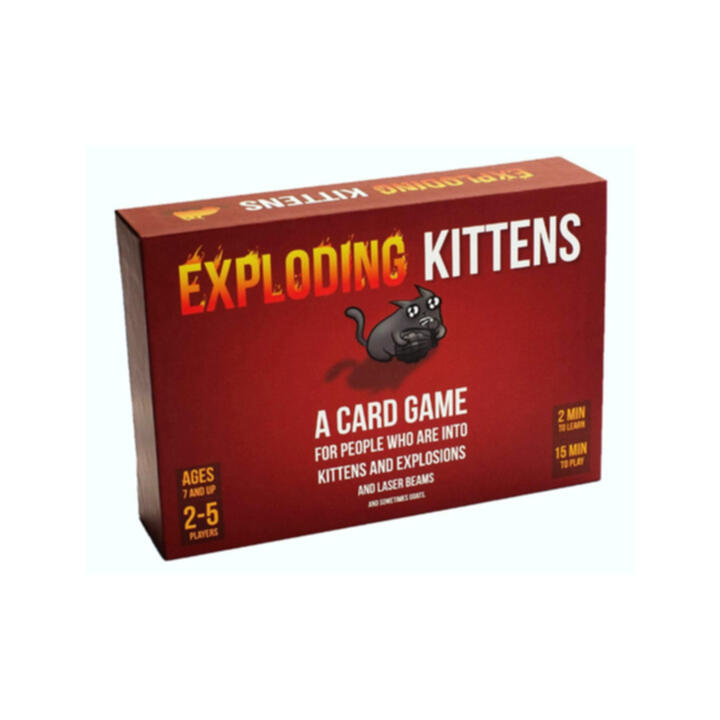
Board game Exploding Kittens
Exploding Kittens is a kitty-powered version of Russian Roulette. Players take turns drawing cards until someone draws an exploding kitten and loses the game. The deck is made up of cards that let you avoid exploding by peeking at cards before you draw, forcing your opponent to draw multiple cards, or shuffling the deck. The game gets more and more intense with each card you draw because fewer cards left in the deck means a greater chance of drawing the kitten and exploding in a fiery ball of feline hyperbole. For 2 to 5 players. Age: 7+
30
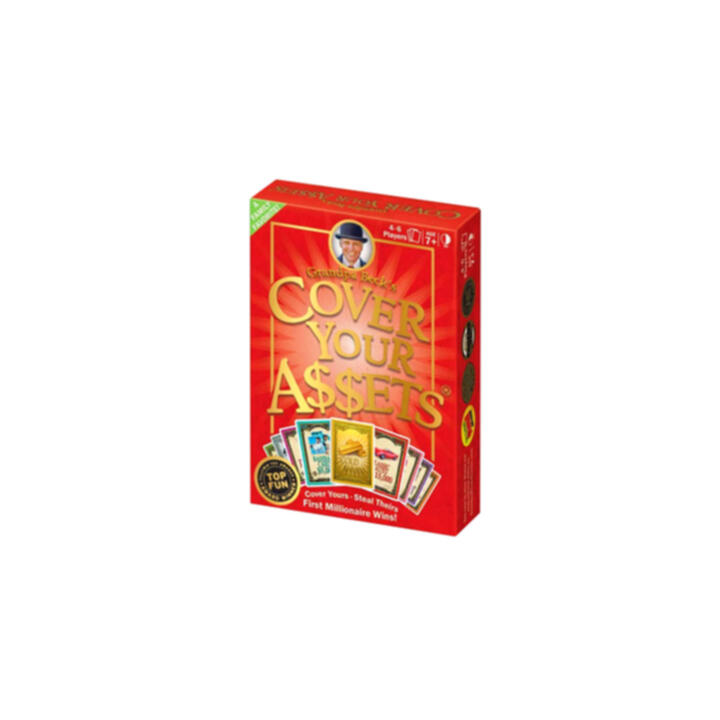
Board game Cover Your Assets
The stakes are high in this high-energy, competitive, and cut-throat, set-collection card game from Grandpa Beck’s Games! In Cover Your Assets, players compete to become the first millionaire by building towers of matching sets made from 10 different types of asset cards (things like jewels, piggy banks, classic autos, and more). Each new set that is created is stacked crosswise on top of the previous set, covering, and protecting, all the sets beneath it. The top set of assets in your pile is vulnerable, and can be stolen by other players if they show you a matching asset card, or wild (which are Silver and Gold cards) from their hand. You can defend your stack by showing the challenger a matching card from your own hand. If you do, they can counter with another matching card of their own. The battle rages back and forth until one player can’t respond, or bows out. If you win, you keep the set, if the challenger wins, they take the set. Regardless of who wins, ALL the cards used in the challenge are added to the set, increasing its value and allure to other players For 4 to 6 players. Age: 7+
50
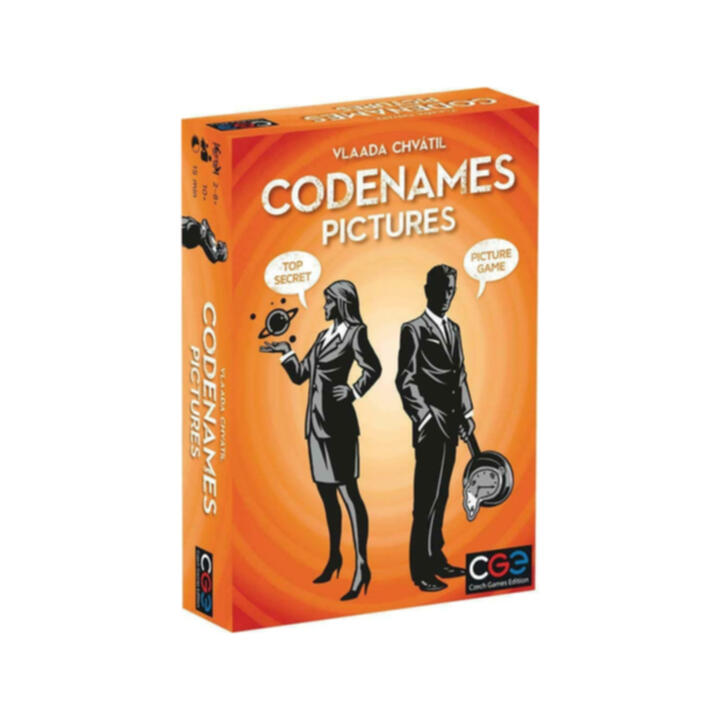
Board game Codenames Pictures
What are these strange symbols on the map? They are code for locations where spies must contact secret agents! Two rival spymasters know the agent in each location. They deliver coded messages telling their field operatives where to go for clandestine meetings. Operatives must be clever. A decoding mistake could lead to an unpleasant encounter with an enemy agent – or worse, with the assassin! Both teams race to contact all their agents, but only one team can win. For 2 to 8 players. Age: 10+
100
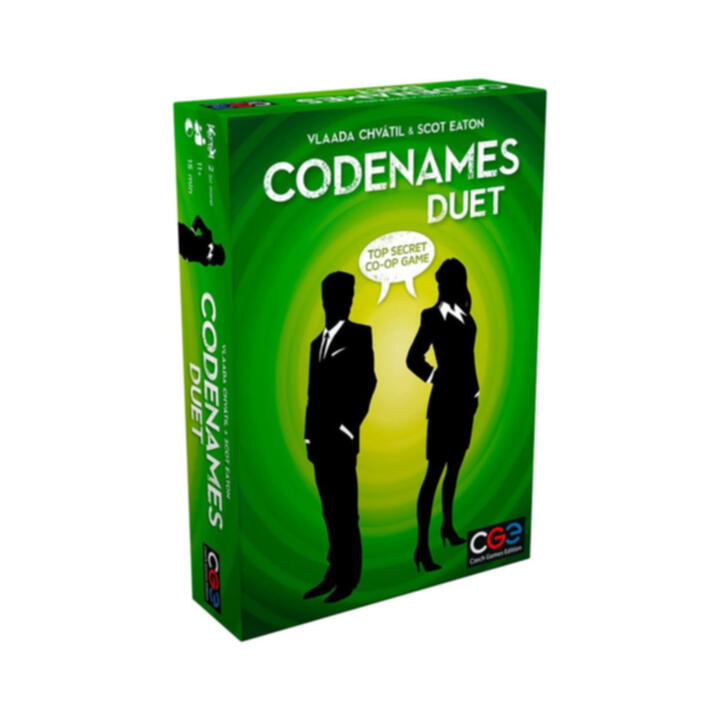
Board game Codenames Duet
Codenames duet keeps the basic elements of codenames give one word clues to try to get someone to identify your agents among those on the table but now you’re working together as a team to find all of your agents. (Why you don’t already know who your agents are is a question that CONGRESSIONAL investigators will get on your back about later!) to set up play, lay out 25 word cards in a 5×5 grid. Place a key card in the holder so that each player sees one side of the card. Each player sees a 5×5 grid on the card, with nine of the Squares colored Green (representing your agents) and one square colored black (representing an assassin). the assassin is in different places on each side of the card, and three of the nine Squares on each side are also Green on the other side! collectively, you need to reveal all fifteen agents — without revealing either assassin or too many innocent bystanders — before time runs out in order to win the game. Either player can decide to give a one word clue to the other player, along with a number. Whoever receives the clue places a finger on a card to identify that Agent. If correct, they can attempt to identify another one. If they reveal as many as the number stated by the clue giver, then they can take one final guess, if desired. If they identify a bystander, then their guessing time ends. If they identify an assassin, you both lose. Based-on the original party game hit, Codenames Duet is a standalone co-op clue giving adventure that sends you and your partner on a top secret mission to a crowded city. Your objective? Contact 15 agents while avoiding a band of enemy assassins. You know the agents that your partner can contact safely; they know the agents you can contact safely. By giving each other one-word clues that can point to multiple words on the board, you must try to find all the agents before your turns run out. For 2 to 8 players. Age: 11+
100

Board game Codenames
Codenames is an easy party game to solve puzzles. The game is divided into red and blue, each side has a team leader, the team leader's goal is to lead their team to the final victory.At the beginning of the game, there will be 25 cards on the table with different words. Each card has a corresponding position, representing different colors. Only the team leader can see the color of the card. The team leader should prompt according to the words, let his team members find out the cards of their corresponding colors, and find out all the cards of their own colors to win. For 2 to 8 players. Age: 14+
90

Board game Cluedo Harry Potter
INSPIRED BY HARRY POTTER: The Clue: Wizarding World Harry Potter edition board game is a suspenseful game of "whodunit" with artwork and characters inspired by the Wizarding World Harry Potter universe Kids move around the board as Harry, Ron, Hermione, Ginny, Luna, or Neville, and try to discover who vanished, what spell was used, and where the crime happened For 3 to 5 players. Age: 9+
70
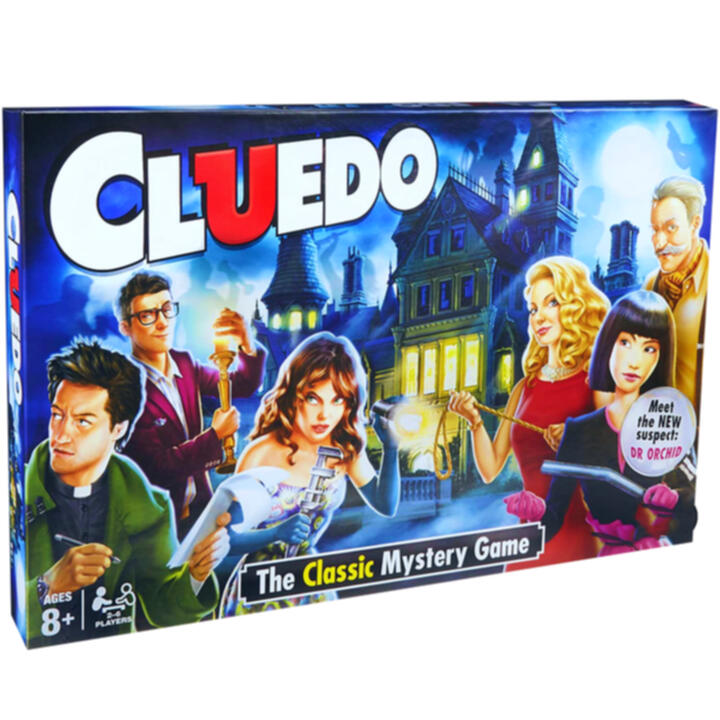
Board game Cluedo
Reclusive millionaire Samuel Black’s been murdered in his mansion! Now, it’s up to you to crack the case! Question everything to unravel the mystery. Who did it? Where? And with what weapon? Ransack the mansion for clues, ask cunning detective questions and leave no card unturned. Solve the murder first to win! Fun twist on the classic mystery game features new characters and a two-player version! For 2 to 6 players. Age: 8+
60

